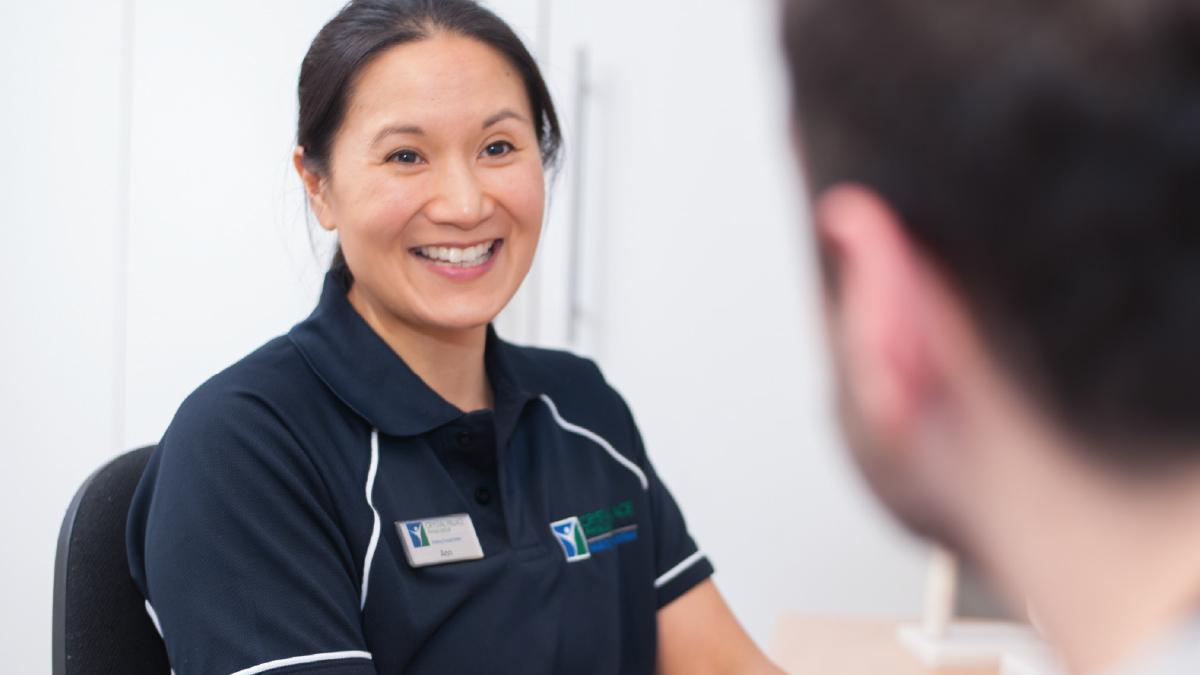Latest in research from Tina Hadley-Barrows, consultant physiotherapist

What is the innovation and how can it be used?
A new evidence-informed Patient Explanation Package for Osteoarthritis (PEP OA) is now freely available for physiotherapists to help during conversations about the condition.
The package consists of a short animation (3 minutes 56 seconds) and a written leaflet that can be used in the consultation or signposted to. The explanations have been co-designed with people with the condition, healthcare professionals and researchers to provide credible information and encourage self-management of symptoms using exercise and weight loss (if needed). The resource has also been designed with health literacy and accessibility in mind.
Why do we need to explain osteoarthritis well?
Osteoarthritis (OA) is the most common joint pain condition in older adults and is a major cause of mobility problems and disability. Recent national guidelines (NICE guideline [NG226] Osteoarthritis in over 16s: diagnosis and management 2022) recommend that everyone affected by OA should receive good information about the condition in an accessible format and be supported to self-manage their symptoms using exercise and weight loss (if needed). However, explanations of OA from healthcare professionals often do not help patients to understand their condition and sometimes the information provided is too complex. Common myths exist, such as it being ‘aches and pains as you get older’ and ‘pain during movement is a sign of harm’, which can lead people with the condition to question whether anything can be done to improve their symptoms and prevents them exercising. Hence, clear and accurate condition explanations, which include why and how, evidence-based care can improve health, are important.
How was the new PEP OA created?
A team from Keele University, led by Professor Clare Jinks, co-designed the new leaflet and animation in a number of steps:
- Step one: Possible statements for an OA explanation were selected and discussed with healthcare professionals and patients in stakeholder workshops.
- Step two: A patient group was asked which of the identified statements were the most important for people with osteoarthritis to help them manage their condition using exercise and weight loss (if needed).
- Step three: 2,000 people with OA were sent a survey to identify preferences for sentence wording and statements that could be used in an explanation.
- Step four: Using the results of the survey, a patient advisory group then developed a story board for an animation and leaflet. The leaflet and animation were produced, and the leaflet was checked for readability using the Flesch Reading Ease score. A community of practice of patients and stakeholders developed a dissemination plan to share the new explanation resources.
Summary and discussion
The PEP OA animation and leaflet are credible resources for the public, as well as people with OA and healthcare professionals, as they have been generated through empirical research and co-design (a rigorous process of development including key stakeholders including people with OA).
They are part of a physiotherapist’s toolkit that can be used alongside verbal messages given in OA consultations and can be used to strengthen messages about the things people can do to manage their symptoms and condition. Physiotherapists can use technology, such as animations, to help during evidence-based condition explanations. Resources like these are also easy to share and make widely accessible.
The team from Keele University is keen to get feedback on how useful the resources are for patients and health care professionals.
Future steps of the project will also evaluate how the explanations are implemented in practice and the work will be published in scientific journals.
You may be interested to read
NICE guideline [NG226] Osteoarthritis in over 16s: diagnosis and management 2022.To keep up to date with future news about osteoarthritis and explaining it well visit Keele Health and Keele University @keeleIAU and @KeeleOACOP
Funding
This PEP OA study was funded by the National Institute for Health Research (NIHR) Research for Patient Benefit Programme (Reference Number PB-PG-0817-20031) and NIHR Applied Research Collaboration West Midlands (NIHR 200165). This project was supported by the Keele Impact Accelerator Unit
Expert view: Tina Hadley-Barrows consultant physiotherapist, Royal Wolverhampton NHS Trust, and knowledge mobilisation fellow at Keele University

These evidence-based resources are already helping to change the narrative around OA for patients and the public. Clinically I see many patients who believe ‘nothing can be done’ to help their joint pain symptoms and sadly many believe that any exercise or activity will cause harm by wearing out their joints. Patients, researchers, and health care practitioners have worked hard to bring together key messages to dispel these myths.
Having presented the animation at several education and information awareness sessions for patients, healthcare and exercise professionals, it has been great to see the mindset of patients shift when they understand that there are things they can do to help themselves.
Importantly, with an ageing population and widespread obesity in the UK, helping people to understand OA is vital to encourage activity and weight management, which will also help prevent many other long-term conditions.
Along with education sessions and social media campaigns, locally we are playing the animation with subtitles in our patient waiting rooms and working on ways to translate and culturally adapt the resources to benefit all our communities.
If you would like to access the resources, please contact the Keele University team for more information c.jinks@keele.ac.uk
Number of subscribers: 4




































